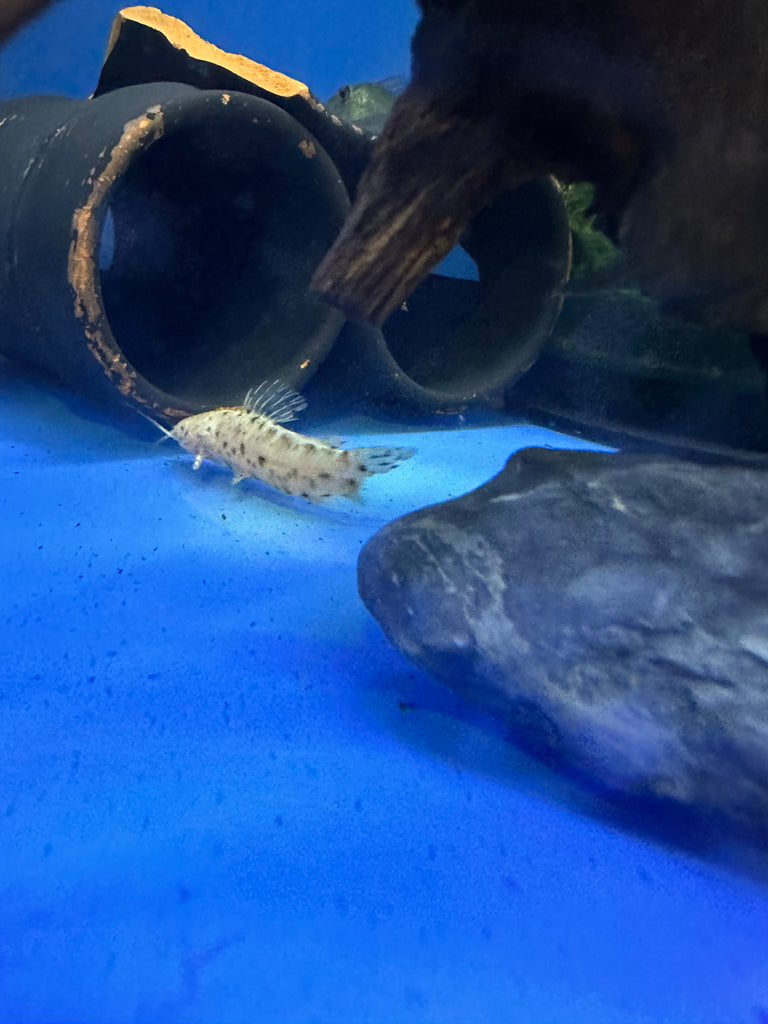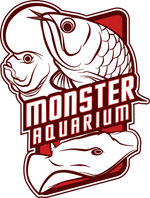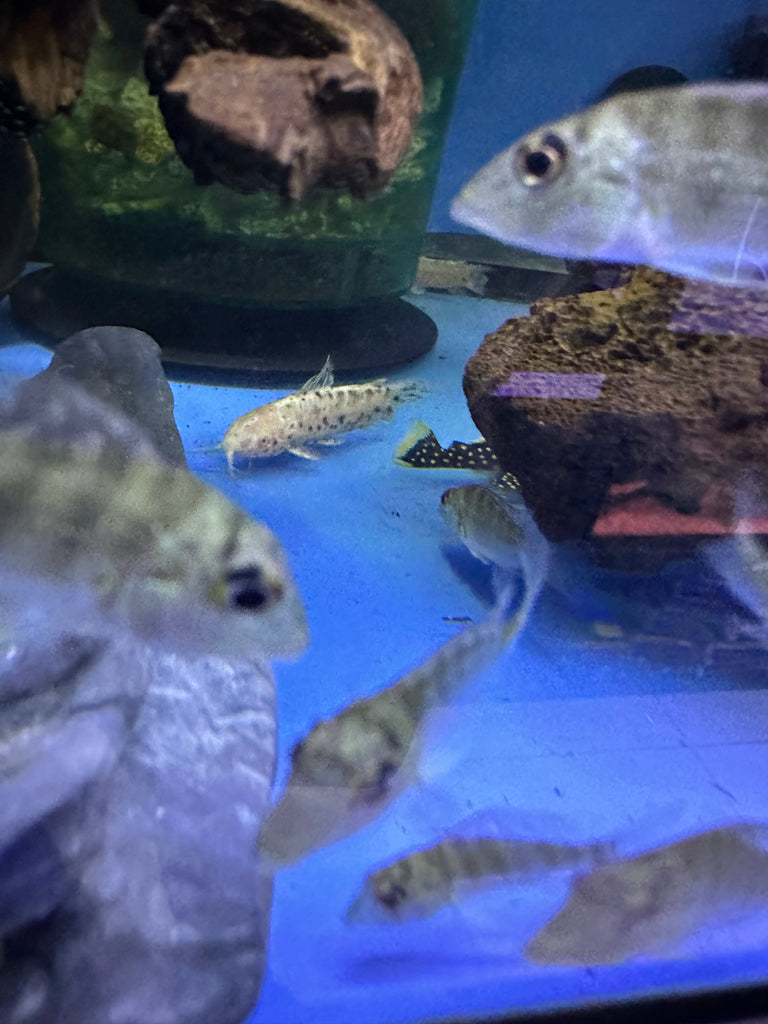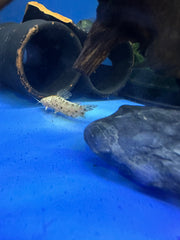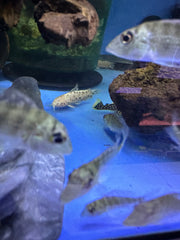Albino hoplo Catfish
The Albino Spotted Hoplo Catfish, scientifically known as Megalechis thoracata, is a medium-sized catfish species native to northern South America. This catfish has gained popularity in the aquarium hobby due to its hardiness, peaceful nature, and attractive markings. While it outgrows nano aquariums, it thrives in medium to large aquariums, especially those designed with Amazon-type setups featuring cichlids or tetras. The albino variety of this species is relatively rare but retains vibrant coloration.
The Albino Spotted Hoplo Catfish is a social species that can be kept as a single specimen or in groups. It tends to be somewhat reclusive and requires ample hiding places such as driftwood, pipes, or crevices. When kept in a group, it becomes more outgoing, and multiple specimens may even share the same hiding spot. Although not particularly territorial or aggressive, this catfish will prey on small creatures that can fit in its mouth, including tiny fish, dwarf shrimp, and fry. It generally leaves plants undisturbed. While it is not overly sensitive, it prefers a calm to moderate water flow and enjoys foraging in the substrate, so using sand or fine, smooth gravel in the aquarium is recommended.
Feeding the Albino Spotted Hoplo Catfish is straightforward. In the wild, it primarily feeds on small crustaceans and other invertebrates. In captivity, it readily accepts live, frozen, and dry meaty foods, although incorporating some vegetable matter, such as spirulina-rich dry foods, is beneficial. Care should be taken not to overfeed this voracious eater. Placing food near its hiding place is an effective method, as the catfish will often eagerly emerge when food is available.
In summary, the Albino Spotted Hoplo Catfish is a sought-after species in the aquarium hobby, appreciated for its resilience, peaceful demeanor, and captivating appearance. Whether kept individually or in groups, providing hiding places, suitable substrate, and a diverse diet ensures the well-being of this catfish in the aquarium environment.
